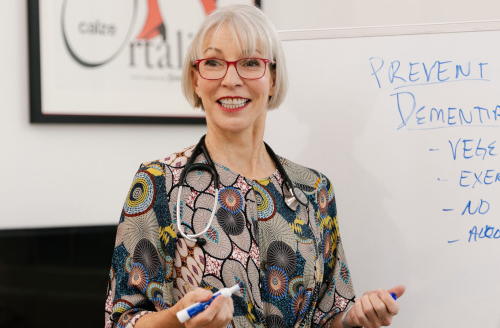
When Walking is No Longer an Option
In my last post, I wrote about how important I think it is for patients to keep moving, walking, if possible. Of course, for many patients there comes a time when real mobility become impossible. Various health concerns may confine an elder to a wheelchair, or to a bed.
But even then, it’s important to keep moving! I can’t emphasize this enough to families and caregivers: Even if your elder can’t walk, or only walks with difficulty, it’s crucial to keep moving. Staying in one position is not only boring, it can lead to pressure ulcers, what are sometimes known as “bedsores.”
If a person stays in one position too long, the skin breaks down in the area of the body that’s bearing the weight. The skin first becomes red and irritated, then it cracks or tears. These sores are very, very painful. They can lead to dangerous, sometimes even fatal, infections. Once a pressure ulcer appears, it can be very difficult to heal. It’s better not to let them appear in the first place.
So, how do you hold the line against bedsores? Keep moving! Whatever their situation, an elder should change position at least every two hours. If they spend a large part of the day in a wheelchair, use a reclining wheelchair to ease those position changes. Many elders like sitting in recliners, and again, it’s easy to change position in a recliner. Sit up straight, then lie back, then try a middle position. If the elder is in any sort of chair, be sure to use a GEL CUSHION (not foam) seat. The gel cushion further guards against bedsores, otherwise known in medicine as ‘pressure ulcers’. Having the occupational therapist help determine the proper seating and transfers is important.
If your elder is in bed, make sure it is a hospital bed that can change angles, and has an air mattress that changes pressure, which also helps to prevent bedsores. Adjust the position of the bed every couple of hours. Have the elder lie with a pillow under the left buttock for 2 hours, then change to the pillow under the right buttock. It is best to keep the head of the bed to 30 degrees and cushion any bony spots. Lastly, NEVER, put the pillow under just the knees- that contributes to leg contractions. Always put the pillow under the calves and make sure the heels are floating (check that a hand can pass below the heels). Waffle boots may help. But any booties that only put lamb’s wool under the heel, but don’t reduce the pressure on the heel, will not help.
And of course, never feed your loved one while they are lying down. They need to sit up near 90 degrees (straight up) to decrease the risk of aspiration…. It is best to eat when up in a chair not in the bed if possible.
Turn it into a game. What position will we do next? Do whatever you need to do, but make sure your elder moves.

Elizabeth (Dr Liz) has over twenty years of experience in providing medical care to the elders. She is board-certified in Internal Medicine, Geriatric Medicine and Palliative Care Medicine. Dr Landsverk founded ElderConsult Geriatric Medicine, a house calls practice, to address the challenging medical and behavioral issues often facing older patients and their families.
